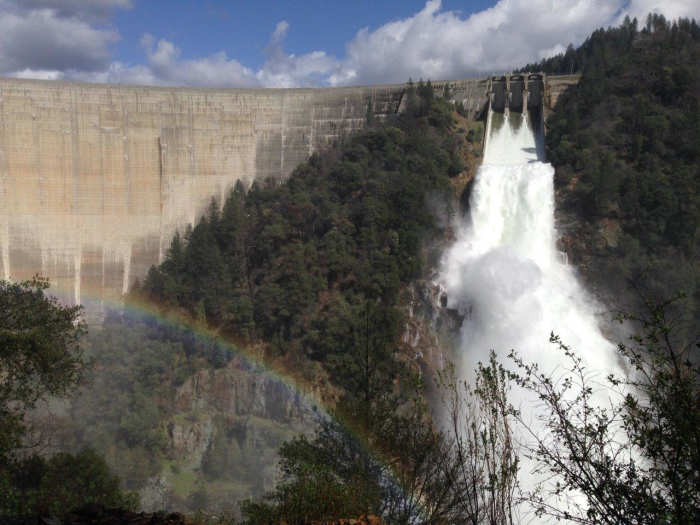




The Yuba County Water Agency (YCWA) needed to upgrade an unsupportable hydrologic supervisory, control, and data-acquisition (hydro-SCADA) system. The monitoring network consisted of several repeater stations, and 16 hydrology stations providing real-time measurements at four dams, multiple rivers and streams, and several irrigation ditches and penstock pipelines. Various combinations of water level, flow, and temperature are measured at these locations.
Geo-Watersheds Scientific (GWS) won the contract to design, install, integrate, and cut over the new system. GWS chose Campbell Scientific hardware and software to do the job.
The flexibility to measure the many different existing hydrologic sensor types, generate output signals to integrate to existing energy-SCADA systems, and interface to Wonderware software for the concurrently updated energy-SCADA system was required, and made Campbell Scientific products the best choice.
Wonderware is a Windows-based human-machine interface (HMI) industrial software that was concurrently being implemented as the new energy-SCADA system. After the hardware upgrade, control of the system would be converted to Wonderware. Before the conversion to Wonderware, the system was controlled by an Open System International (OSI) SCADA system.
Before and throughout the upgrade, YCWA operated an OSI hardware and software system to monitor and control the energy-SCADA system. The OSI system required 24 0-5V signal inputs that represented 24 monitored parameters from the hydrologic network.
The project proceeded in phases. First, the programs were written for CR800 and CR6 dataloggers and tested to verify measurements with existing sensors. Campbell Scientific equipment was then installed in the field without interruption with existing systems. After verification of remote telemetry to all new equipment, sensors were cut over from the older systems to the new Campbell data loggers. Field measurements were used to verify data reporting from the OSI hardware and software.
The updated system’s six base stations are accessed by IP communication to serial port servers. At a central station, with the new CR6 dataloggers, direct IP connections were made to the logger. Most of the other stations in the network used RF450 radios to communicate to remote stations through a series of primary and secondary repeaters. Each hydrologic station consisted of one or more water-level or water-flow sensor. Several stations also included water-temperature sensors.
The 24 0-5V output signals are generated by 7 SDM-AO4s connected to the base (main) CR6 datalogger acting as a data accumulator. Data accumulation is handled by the Campbell Scientific PakBus communication protocol using the CRBasic GetVariables instruction in the main CR6. It gathers 24 variables from 16 remote stations (CR800s) and sensors directly hooked up to the CR6. One instance of the instruction is used per remote station.
After the entire network was confirmed to function, a successful 30-day final site-acceptance-test period was completed. Instead of the digital-to-analog conversion required by OSI, Wonderware uses DNP3 data protocol to transfer data digitally.
The upgrade has yielded multiple improvements:
- Data values are collected at more frequent time intervals, better meeting the data-use requirements for real-time operations.
- Security objectives were met with the combination of Campbell Scientific PakBus and communication protocols.
- An increased number of data standards were met to improve end-user data applications.
- Nine new stations were added to a portion of the hydrologic network, following the same data and communication standards without impacts to data reporting requirements.
- A larger variety of measurements and metadata is being made.
- Additional data tables are generated for multiple end users and data standards.
- A transition path from the analog signals of OSI to the digital values for Wonderware was enabled.
- System managers have more access to network communication diagnostic information.
- More measurements are available for Wonderware.
This hydro-SCADA network will have support for many years to come.
Case Study Summary
Application
Upgrading watershed scale hydrologic data network to meet hydroelectric operational requirementsLocation
Yuba County, CaliforniaProducts Used
CR6 CR800 RF450 SDM-AO4 LoggerNet AdminContributors
Austin McHugh, Geo-Watersheds Scientific (GWS)Participating Organizations
Yuba County Water Agency (YCWA)Measured Parameters
Water level, water flow, water temperature, communication diagnosticsParticipating Consultants/Integrators
Geo-Watersheds ScientificView the PDF